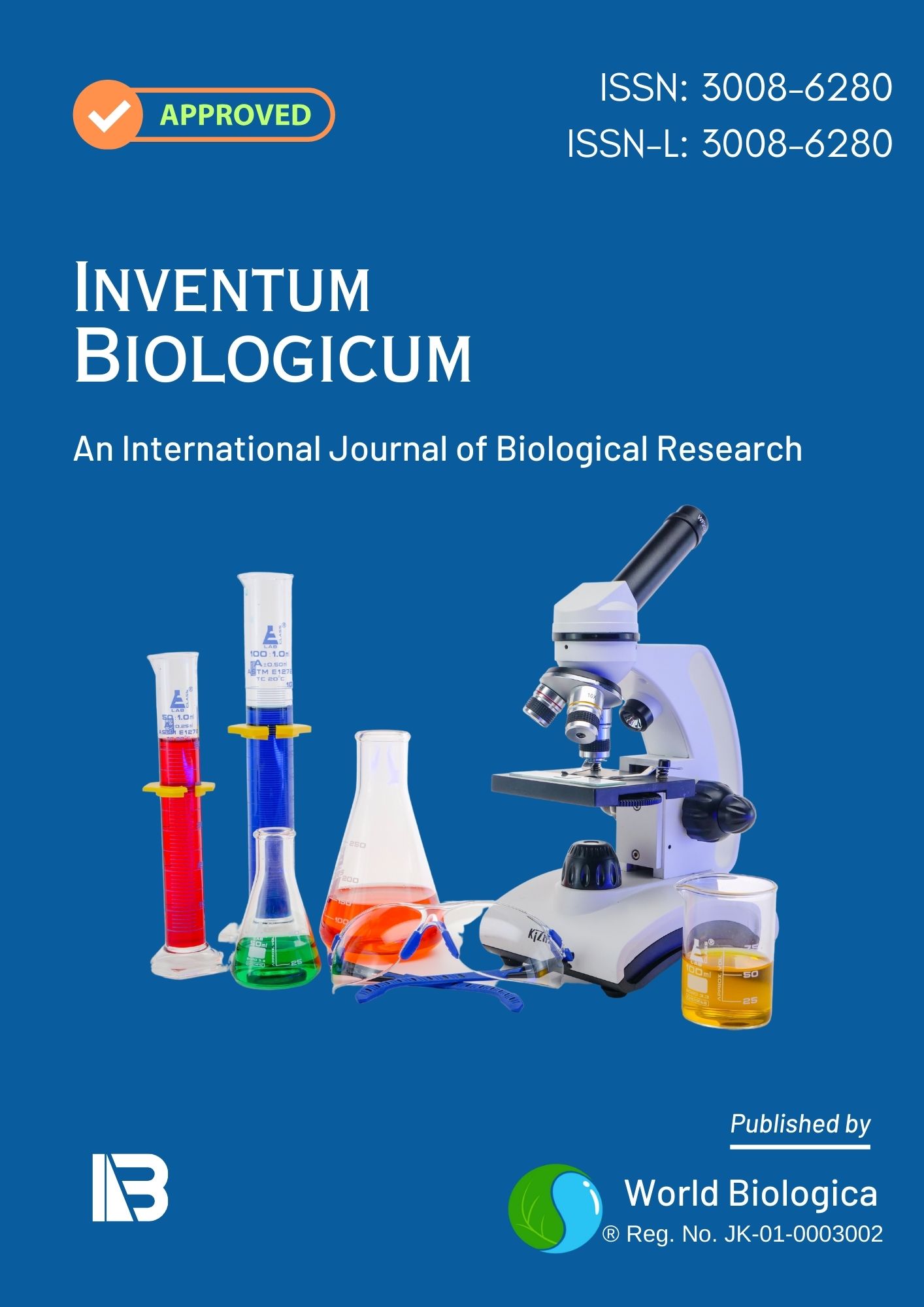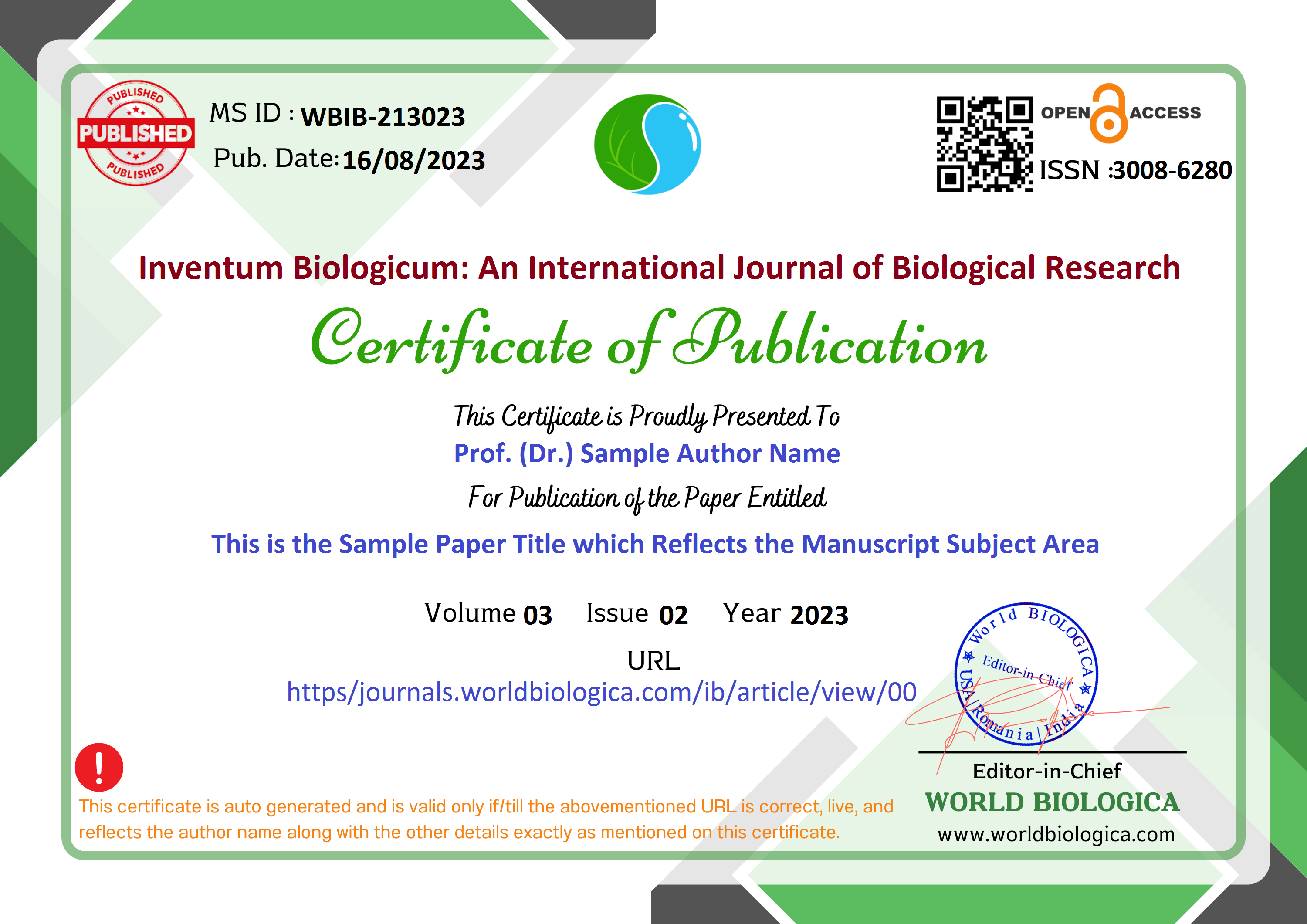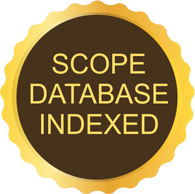Metabolic Regulation at the Molecular Level
Investigating Intracellular Routes and Clinical Consequences in the Regression of Atherosclerosis and the Optimisation of Cardiovascular Health
Keywords:
Atherosclerosis, Fasting protocols, Cardiovascular health, Intermittent fasting, Metabolic regulationAbstract
The conventional therapy for atherosclerosis, marked by the buildup of arterial plaque that constricts and hardens the arteries, involves managing elevated blood pressure and cholesterol levels. Recent research indicates that fasting can effectively repair atherosclerosis. This review investigates the mechanisms by which fasting influences atherosclerosis, analyses clinical data, outlines fasting procedures, considers patient demographics, and discusses the clinical implications. The clinical data illustrating the efficacy of fasting in inhibiting atherosclerosis progression is analysed, with the molecular impacts of fasting on metabolism, cellular function, and inflammation. This study evaluates the feasibility, duration, and outcomes of several fasting protocols, including time-restricted eating and intermittent fasting, across diverse patient populations. The evaluation also addresses implementation aspects, including safety in clinical environments, monitoring, and patient education. This review contributes to the understanding of fasting’s therapeutic potential in preventing atherosclerosis and improving cardiovascular health.
Downloads
References
Libby, P., Buring, J. E., Badimon, L., et al. (2019). Atherosclerosis. Nature Reviews Disease Primers, 5(1), 56. https://doi.org/10.1038/s41572-019-0116-6
Weiss, E. P., & Fontana, L. (2014). Caloric restriction: Powerful protection for the aging heart and vasculature. American Journal of Physiology-Heart and Circulatory Physiology, 307(4), H477–H492. https://doi.org/10.1152/ajpheart.00253.2014
Ridker, P. M., Everett, B. M., Thuren, T., et al. (2017). Antiinflammatory therapy with canakinumab for atherosclerotic disease. New England Journal of Medicine, 377(12), 1119–1131. https://doi.org/10.1056/NEJMoa1707914
Mattson, M. P., Longo, V. D., & Harvie, M. (2017). Impact of intermittent fasting on health and disease processes. Ageing Research Reviews, 39, 46–58. https://doi.org/10.1016/j.arr.2016.10.005
Harvie, M., Wright, C., Pegington, M., et al. (2013). The effect of intermittent energy and carbohydrate restriction v. daily energy restriction on weight loss and metabolic disease risk markers in overweight women. British Journal of Nutrition, 110(8), 1534–1547. https://doi.org/10.1017/S0007114513000792
Weiss, E. P., & Fontana, L. (2014). Caloric restriction: Powerful protection for the aging heart and vasculature. American Journal of Physiology-Heart and Circulatory Physiology, 307(4), H477–H492. https://doi.org/10.1152/ajpheart.00253.2014
Goldberg, I. J., & Bornfeldt, K. E. (2013). Lipids and the endothelium: Bidirectional interactions. Current Atherosclerosis Reports, 15(10), 1–8. https://doi.org/10.1007/s11883-013-0388-9
Poirier, P., Giles, T. D., Bray, G. A., Hong, Y., Stern, J. S., Pi-Sunyer, F. X., et al. (2006). Obesity and cardiovascular disease: Pathophysiology, evaluation, and effect of weight loss: An update of the 1997 American Heart Association Scientific Statement on obesity and heart disease from the Obesity Committee of the Council on Nutrition, Physical Activity, and Metabolism. Circulation, 113(6), 898–918. https://doi.org/10.1161/CIRCULATIONAHA.106.171016
Eckel, R. H., Jakicic, J. M., Ard, J. D., de Jesus, J. M., Houston Miller, N., Hubbard, V. S., et al. (2014). 2013 AHA/ACC guideline on lifestyle management to reduce cardiovascular risk: A report of the American College of Cardiology/American Heart Association Task Force on Practice Guidelines. Journal of the American College of Cardiology, 63(25), 2960–2984. https://doi.org/10.1016/j.jacc.2013.11.003
Mozaffarian, D., Benjamin, E. J., Go, A. S., Arnett, D. K., Blaha, M. J., Cushman, M., et al. (2016). Heart disease and stroke statistics—2016 update: A report from the American Heart Association. Circulation, 133(4), e38–e360. https://doi.org/10.1161/CIR.0000000000000350
Bennett, M. R., Sinha, S., & Owens, G. K. (2016). Vascular smooth muscle cells in atherosclerosis. Circulation Research, 118(4), 692–702. https://doi.org/10.1161/CIRCRESAHA.115.306361
Glass, C. K., & Witztum, J. L. (2001). Atherosclerosis: The road ahead. Cell, 104(4), 503–516. https://doi.org/10.1016/S0092-8674(01)00238-0
Hansson, G. K., & Hermansson, A. (2011). The immune system in atherosclerosis. Nature Immunology, 12(3), 204–212. https://doi.org/10.1038/ni.2001
Libby, P., Ridker, P. M., & Hansson, G. K. (2002). Progress and challenges in translating the biology of atherosclerosis. Nature, 420(6917), 224–232. https://doi.org/10.1038/nature01246
Lusis, A. J. (2000). Atherosclerosis. Nature, 407(6801), 233–241. https://doi.org/10.1038/35025203
Newby AC. (2008). Metalloproteinases and vulnerable atherosclerotic plaques. Trends in Cardiovascular Medicine, 18(6), 210–218. DOI: 10.1016/j.tcm.2007.09.001
Rader DJ. (2006). Molecular regulation of HDL metabolism and function: implications for novel therapies. Journal of Clinical Investigation, 116(12), 3090–3100. DOI: 10.1172/JCI30124
Tabas I. (2010). The role of endoplasmic reticulum stress in the progression of atherosclerosis. Circulation Research, 107(7), 839–850. DOI: 10.1161/CIRCRESAHA.110.224766
Brunner HR, Nussberger J, Waeber B, Brunner DB. (1986). A review of the efficacy and tolerability of calcium antagonists in hypertension. Clinical Therapeutics, 8(2), 178–190. DOI: 10.1016/0149-2918(86)90057-9
Cahill K, Stevens S, Perera R, Lancaster T. (2013). Pharmacological interventions for smoking cessation: an overview and network meta-analysis. Cochrane Database of Systematic Reviews, (5), CD009329. DOI: 10.1002/14651858.CD009329.pub2
Capodanno D, Angiolillo DJ. (2010). Aspirin for primary prevention of cardiovascular disease. The Lancet, 375(9708), 2178–2185. DOI: 10.1016/S0140-6736(10)60576-3
Kokkinos P. (2012). Physical activity, health benefits, and mortality risk. ISRN Cardiology, 2012, 718789. DOI: 10.5402/2012/718789
Libby P, Ridker PM, Hansson GK. (2002). Progress and challenges in translating the biology of atherosclerosis. Nature, 420(6917), 868–874. DOI: 10.1038/nature01246
Mortensen MB, Falk E. (2018). Primary prevention with statins in the elderly. Journal of the American College of Cardiology, 71(1), 85–94. DOI: 10.1016/j.jacc.2017.10.086
Neale J, Smith AC, Baker E. (2017). Pharmaceutical drug misuse among people with intellectual disabilities: A review. Journal of Applied Research in Intellectual Disabilities, 30(6), 987–998. DOI: 10.1111/jar.12356
World Health Organization. (2003). Adherence to long-term therapies: Evidence for action. Geneva: WHO. DOI: 10.1002/9780470862100
Clemente-Postigo M, Queipo-Ortuño MI, Boto-Ordoñez M, Coin-Aragüez L, Roca-Rodríguez MM, Delgado-Lista J, et al. (2019). Effect of acute and chronic caloric restriction and weight loss on inflammatory markers in humans: A systematic review and meta-analysis. Nutrients, 11(2), 413. DOI: 10.3390/nu11020413
Harvie MN, Pegington M, Mattson MP, Frystyk J, Dillon B, Evans G, et al. (2011). The effects of intermittent or continuous energy restriction on weight loss and metabolic disease risk markers: A randomized trial in young overweight women. International Journal of Obesity, 35(5), 714–727. DOI: 10.1038/ijo.2010.171
Johnson JB, Summer W, Cutler RG, Martin B, Hyun DH, Dixit VD, et al. (2007). Alternate day calorie restriction improves clinical findings and reduces markers of oxidative stress and inflammation in overweight adults with moderate asthma. Free Radical Biology and Medicine, 42(5), 665–674. DOI: 10.1016/j.freeradbiomed.2006.12.005
Mattson MP, Arumugam TV. (2018). Hallmarks of brain aging: Adaptive and pathological modification by metabolic states. Cell Metabolism, 27(6), 1176–1199. DOI: 10.1016/j.cmet.2018.05.011
Mattson MP, Longo VD, Harvie M. (2017). Impact of intermittent fasting on health and disease processes. Ageing Research Reviews, 39, 46–58. DOI: 10.1016/j.arr.2016.10.005
Mizushima N, Levine B, Cuervo AM, Klionsky DJ. (2008). Autophagy fights disease through cellular self-digestion. Nature, 451(7182), 1069–1075. DOI: 10.1038/nature06639
Tinken TM, Thijssen DH, Hopkins N, Black MA, Dawson EA, Minson CT, et al. (2009). Impact of shear rate modulation on vascular function in humans. Hypertension, 54(2), 278–285. DOI: 10.1161/HYPERTENSIONAHA.109.134890
Estruch R, Ros E, Salas-Salvadó J, Covas MI, Corella D, Arós F, et al. (2018). Primary prevention of cardiovascular disease with a Mediterranean diet supplemented with extra-virgin olive oil or nuts. New England Journal of Medicine, 378(25), e34. DOI: 10.1056/NEJMoa1800389
Kokkinos, P. (2012). Physical activity, health benefits, and mortality risk. ISRN Cardiology, 2012, 718789. https://doi.org/10.5402/2012/718789
Libby, P., Ridker, P. M., & Hansson, G. K. (2002). Progress and challenges in translating the biology of atherosclerosis. Nature, 420(6917), 868–874. https://doi.org/10.1038/nature01246
Mortensen, M. B., & Falk, E. (2018). Primary prevention with statins in the elderly. Journal of the American College of Cardiology, 71(1), 85–94. https://doi.org/10.1016/j.jacc.2017.10.086
Neale, J., Smith, A. C., & Baker, E. (2017). Pharmaceutical drug misuse among people with intellectual disabilities: A review. Journal of Applied Research in Intellectual Disabilities, 30(6), 987–998. https://doi.org/10.1111/jar.12356
World Health Organization. (2003). Adherence to long-term therapies: evidence for action. World Health Organization. https://doi.org/10.1002/9780470862100
Anton, S. D., Moehl, K., Donahoo, W. T., Marosi, K., Lee, S. A., Mainous, A. G., et al. (2018). Flipping the metabolic switch: Understanding and applying the health benefits of fasting. Obesity, 26(2), 254–268. https://doi.org/10.1002/oby.22065
Chung, K. W., Kim, D. H., Park, M. H., Choi, Y. J., Kim, N. D., Lee, J., et al. (2019). Recent advances in calorie restriction research on aging. Experimental Gerontology, 124, 110625. https://doi.org/10.1016/j.exger.2019.110625
Horne, B. D., Muhlestein, J. B., & Anderson, J. L. (2020). Health effects of intermittent fasting: Hormesis or harm? A systematic review. The American Journal of Clinical Nutrition, 113(4), 883–891. https://doi.org/10.1093/ajcn/nqaa354
Levine, B., & Kroemer, G. (2008). Autophagy in the pathogenesis of disease. Cell, 132(1), 27–42. https://doi.org/10.1016/j.cell.2007.12.018
Libby, P. (2012). Inflammation in atherosclerosis. Arteriosclerosis, Thrombosis, and Vascular Biology, 32(9), 2045–2051. https://doi.org/10.1161/ATVBAHA.108.179705
Mattson, M. P., Longo, V. D., & Harvie, M. (2017). Impact of intermittent fasting on health and disease processes. Ageing Research Reviews, 39, 46–58. https://doi.org/10.1016/j.arr.2014.06.005
Razani, B., Feng, C., Coleman, T., Emanuel, R., Wen, H., Hwang, S., et al. (2012). Autophagy links inflammasomes to atherosclerotic progression. Cell Metabolism, 15(4), 534–544. https://doi.org/10.1016/j.cmet.2012.03.001
Harvie, M. N., Pegington, M., Mattson, M. P., Frystyk, J., Dillon, B., Evans, G., et al. (2011). The effects of intermittent or continuous energy restriction on weight loss and metabolic disease risk markers: A randomized trial in young overweight women. International Journal of Obesity, 35(5), 714–727. https://doi.org/10.1038/ijo.2010.171
Sasaki, Y., Oyama, J., Kozuka, C., Yao, T., Kimura, M., Hirao, K., et al. (2014). Dynamic change of oxidative stress and intracellular iron in AICAR-induced death of mouse peritoneal macrophages. Biological and Pharmaceutical Bulletin, 37(5), 794–801. https://doi.org/10.1248/bpb.b13-00707
Wang, J., Zhang, L., Liang, Z., Liu, Y., Xie, X., Wang, Y., et al. (2020). Impact of intermittent fasting on atherosclerosis: Insights from preclinical and clinical studies. Frontiers in Cardiovascular Medicine, 7, 599368. https://doi.org/10.3389/fcvm.2020.599368
Patterson, R. E., Sears, D. D. (2017). Metabolic effects of intermittent fasting. Annual Review of Nutrition, 37, 371–393. https://doi.org/10.1146/annurev-nutr-071816-064634
Weiss, E. P., & Fontana, L. (2014). Caloric restriction: Powerful protection for the aging heart and vasculature. American Journal of Physiology-Heart and Circulatory Physiology, 305(1), H12–H27. https://doi.org/10.1152/ajpheart.00181.2013
Patterson, R. E., Laughlin, G. A., LaCroix, A. Z., Hartman, S. J., Natarajan, L., Senger, C. M., et al. (2015). Intermittent fasting and human metabolic health. Journal of the Academy of Nutrition and Dietetics, 115(8), 1203–1212. https://doi.org/10.1016/j.jand.2015.02.018
Weiss EP, Fontana L. (2014). Caloric restriction: powerful protection for the aging heart and vasculature. American Journal of Physiology-Heart and Circulatory Physiology, 305(1), H12-27. DOI: 10.1152/ajpheart.00685.2011
Downloads
-
Download PDF
 Abstract Views: 101,
Abstract Views: 101,  Download PDF: 41
Download PDF: 41
Published
How to Cite
Issue
Section
License
Copyright (c) 2025 Inventum Biologicum: An International Journal of Biological Research

This work is licensed under a Creative Commons Attribution-NonCommercial-NoDerivatives 4.0 International License.


















